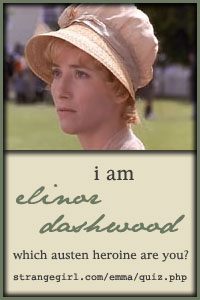Often I found her, when she had a little leisure, sitting in her favourite corner, in a chair whose arms supported the big volume prepared for the blind, and passing her finger slowly over the lines of Moliere's Le Medecin Malgré Lui, chuckling to herself at the comical situations and humorous lines. At that time her actual working vocabulary in French was very small, but by using her judgment, as we laughingly called the mental process, she could guess at the meanings of the words and put the sense together much as a child puzzles out a sliced object. The result was that in a few weeks she and I spent a most hilarious hour one evening while she poured out to me the whole story, dwelling with great gusto on its humour and sparkling wit. It was not a lesson, but only one of her recreations.What I hope for Pamela is to strike a balance between books in which she feels competent and confident and books in which she spends time guessing at the meaning of words, putting the sense together, and mentally processing. With The Brendan Voyage, she first reads two or three pages and orally narrates each paragraph, one by one. Then, I film her narrating what she finds worth retelling from the entire passage. After that, we take turns talking about what the passage reminds us of and this is where she forms personal connections to what she is reading, shares experiences with me, and fortifies episodic memory. We have wandered down many exciting rabbit trails because of this important step in the process. I want to share with you an actual example of this process:
The Original Passage:
I cooked the breakfast. Then George, who freely admitted to being the worlds' worst cook but is amoung its champion dishwashers, offered to do the dishes on my turn if I did his cooking for him. So I cooked lunch. . . Rolfe persevered until the box of matches ran out, and tha as everyon else was getting hungry, I cooked supper.
What She Narrated Orally:
George was the worst cook. Rolf was sad because the bad food was the worst.
What She Narrated in Writing:
They cooked some bad foods. They ate some bad foods. They felt bad.
How She Connected:
What I love most about this clip is how much Pamela enjoys this conversation in which we both add novel ideas. Pamela reminded me of the day I burned the French fries, while I told her two new stories from my childhood. We are equal partners in sharing new information. I can tell she is thinking about what I said because she guessed that it was a story from Sand Point, she asked what year something happened, and she anticipated that my cake burned, etc. I also love the way Pamela clearly enjoys our conversation through her reactions and facial expressions. She also feels comfortable being blunt about my awful cooking skills (and she is being completely truthful).
















